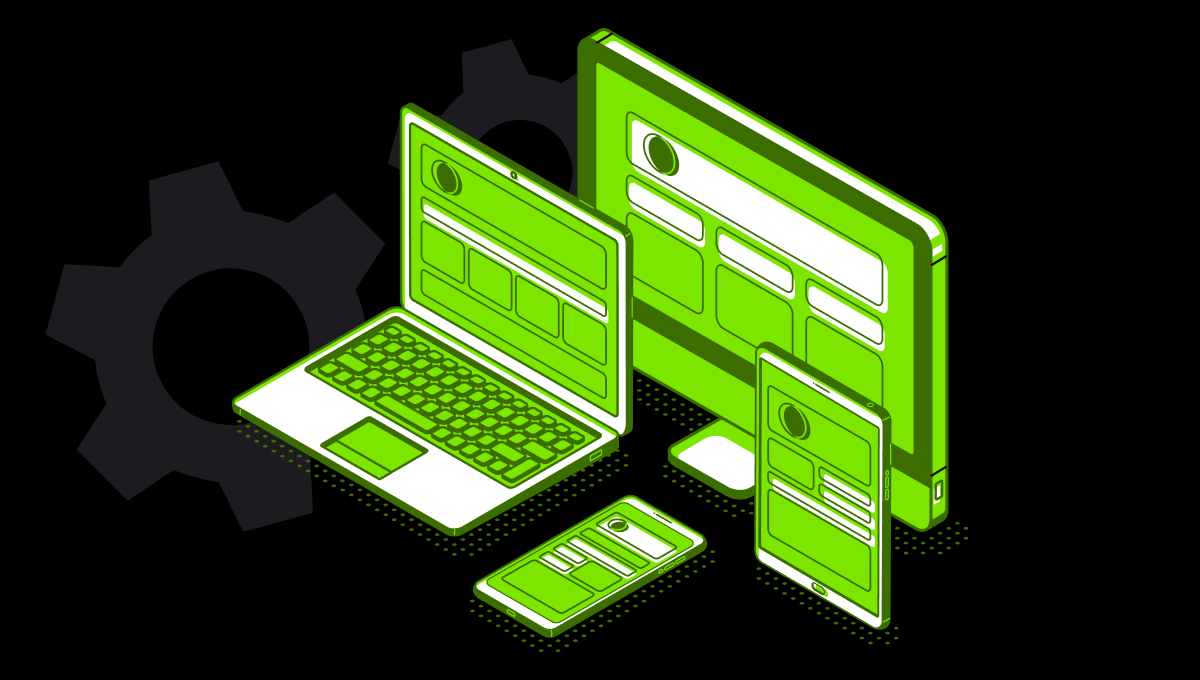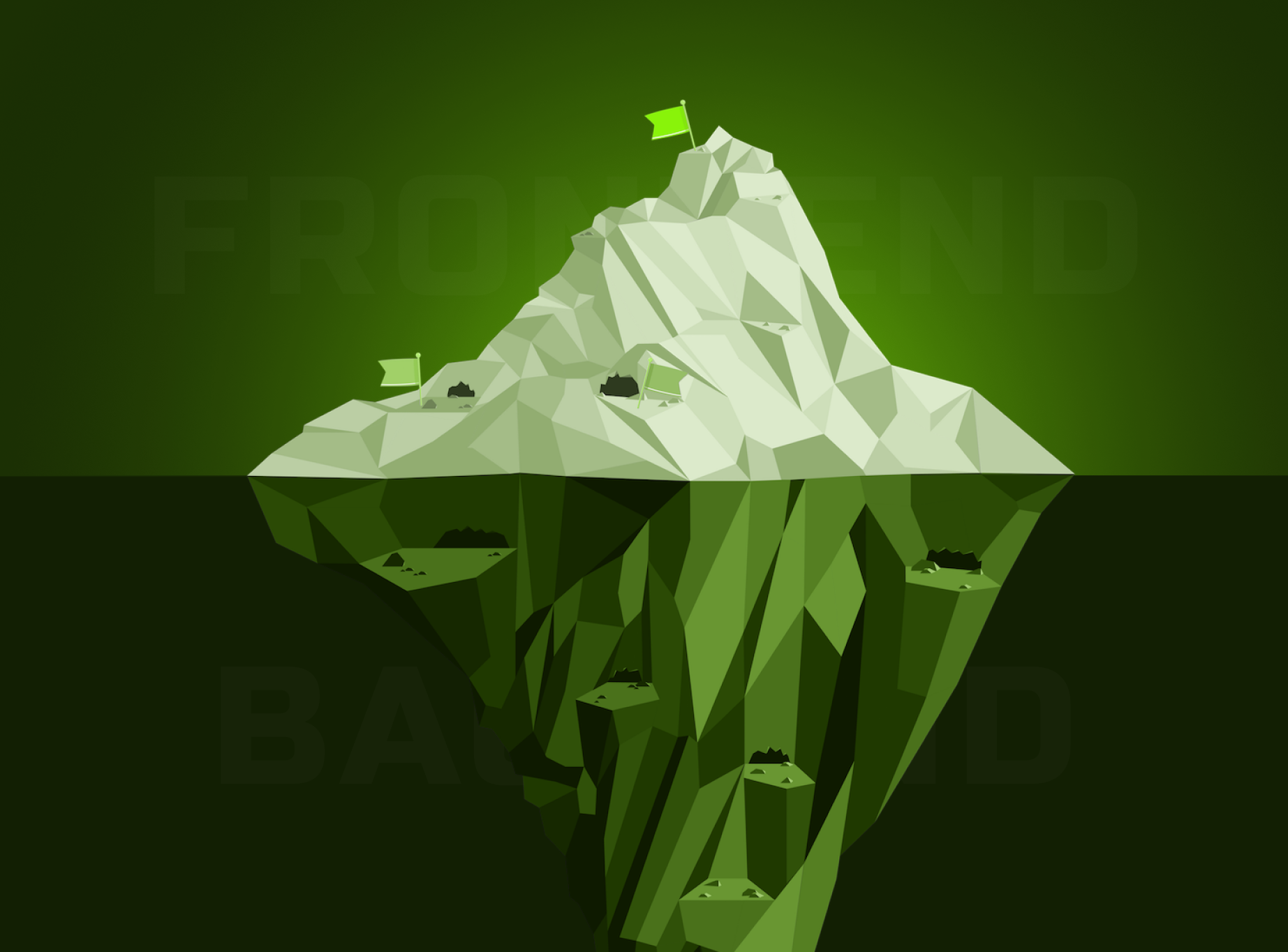What is full-cycle website development? It’s a comprehensive process where a single contractor — typically a digital agency or IT company — handles every stage of building a website. This includes business analysis, prototyping, design, frontend and backend development, and post-launch technical support.
For the client, this means no need to hire separate vendors for each part of the job or worry about how well the design will integrate with the site’s functionality. This approach reduces risks, streamlines communication, and increases the chances of a successful result. It also simplifies feedback and revision workflows — one agency means one point of responsibility
So what exactly does the full process look like? Let’s walk through each step.
1. Business Analysis
Website development begins with project analysis. At this stage, the business goals are clarified, competitors and target audiences are studied, and potential areas for process automation are identified.
This research is typically carried out by a business analyst, product manager, or project manager. They communicate with the client and help prioritize tasks. If the client already has a website, the team evaluates its performance, identifies growth opportunities, and suggests functional improvements.
To gather the necessary information, the team prepares a brief, conducts interviews with stakeholders, and analyzes the user journey along with the company’s internal workflows.
The outcome is a clear understanding of what needs to be built, for whom, and why — a foundation that shapes every step that follows.
2. Technical Specification and Architecture Planning
The technical specification (spec) is a core document that defines the direction of the entire development process. Its purpose is to describe in detail how the website should function — what sections it will include, what features it will offer, and how users will interact with it.
At this stage, the project manager, team lead, or tech lead designs the technical foundation of the future site: how different modules will interact, which technologies and frameworks will be used, and how caching, scaling, and other backend concerns will be handled.
This phase includes building the site’s tree structure, entity relationship diagrams, internal and external API schemas, and flowcharts that map user interactions. The more complex the project, the more detailed the architectural planning needs to be — to avoid costly changes later on.
A well-prepared technical spec is a text-based document that clearly describes the future implementation in line with the client’s expectations. It covers not just what needs to be done, but how it will work. The specification typically includes:
- the full sitemap and structure of the site;
- descriptions of all pages, interface blocks, and UI elements;
- logic for user flows — what happens after a button is clicked, how forms are submitted, how navigation works;
- system behavior in various scenarios;
- a list of required integrations: CRM, payment gateways, third-party services, ERP systems, or 1C:Accounting;
- requirements for security, performance, SEO, and other critical aspects.
Once approved, the technical spec becomes the foundation for the entire project. Skipping it or underestimating its role significantly increases the risk of missed deadlines, budget overruns, and rework.
3. Prototyping and Design
Even if the client has a clear vision of the website’s look, the design process doesn’t begin with visuals. It starts with prototyping — creating wireframes that show the layout of pages, blocks, buttons, forms, and other elements, without any visual styling. These prototypes are part of the technical specification.
The goal of prototyping is to test the logic and usability of the interface before any design work begins. This keeps the focus on user flows and structure rather than colors and fonts. It's also much easier and faster to make adjustments at this stage, as there’s no need to revise finished graphics.
Prototypes can vary in fidelity. Sometimes a basic wireframe is enough to map out the page sections. Other times, detailed elements are modeled — such as dropdown behavior, screen transitions, or modal window appearances.
Once the prototype is approved, the team moves on to the UI kit and UX/UI design — the visual layer. This includes creating the color palette, typography, icons, buttons, and illustrations, all combined into a unified UI kit.
The design process is grounded in UX principles. A good interface is intuitive, logical, clean, and helps users quickly achieve their goals without distractions.
Responsive design is also a must — layouts are adapted for smartphones, tablets, and desktop devices.
Throughout this phase, the team regularly syncs with the client: presenting design drafts, gathering feedback, making revisions, and sharing updated versions.
4. Layout and Frontend Development
Once the design mockups are approved, the project moves into layout and frontend development — the phase where visuals are turned into an interactive website that users can actually see and use.
Frontend developers convert the designs into HTML pages, apply styles with CSS, and bring interactivity to life using JavaScript. Key aspects they focus on include:
- Responsiveness — ensuring that the layout adapts to any screen size without horizontal scrolling;
- Cross-browser compatibility — stable performance in Yandex, Chrome, Safari, Firefox, Edge, and others;
- Accessibility (in some cases) — meeting standards for contrast, font sizes, and other parameters important for users with disabilities.
Frontend development also involves:
- Animations and microinteractions — smooth block transitions, tooltips, hover effects;
- Parallax effects — layered elements that move at different speeds as the user scrolls;
- Screen transitions — dynamic navigation between pages or views.
If the site includes features like input forms, user accounts, shopping carts, or other interactive elements, the frontend becomes even more complex. Developers must ensure that the interface responds to user actions in real time — without full-page reloads.
Frontend development often runs in parallel with backend development, which helps speed up the process and allows early testing of user interfaces.
5. Backend Development
Backend development covers everything that happens behind the scenes of the user interface. Its core responsibilities include:
- configuring and managing databases;
- handling user authentication and access control;
- building and maintaining APIs for frontend-server communication and third-party integrations;
- implementing security protocols and protecting against vulnerabilities.
This stage also lays the groundwork for future scalability — including caching strategies, task queues, and load balancing across servers.
If the site needs to interact with external systems, the backend handles integration with:
- 1C systems, custom CRMs, ERPs, and PRMs;
- payment gateways like YooKassa, Robokassa, PayAnyWay, and PayMaster, or direct bank APIs;
- delivery and logistics services;
- marketing platforms;
- government service portals.
To ensure stability, the system is instrumented with logs — detailed records of user actions, system events, and errors. Logging helps teams identify issues quickly, resolve them efficiently, and monitor suspicious activity.
The result is a fully functional server-side foundation, ready for frontend integration and system testing.
A key part of this process is building an administrative dashboard. The admin panel allows non-technical users to manage the site independently — update content, upload or remove images, track analytics, and create new pages or blocks without developer involvement.
6. Testing
Even the most carefully planned website requires thorough testing. It’s essential to verify that every section works as intended, that the site aligns with the technical specification, offers a smooth user experience, and can handle peak traffic loads.
Initial testing is performed after individual modules are implemented, but the bulk of the effort occurs during the final pre-launch phase.
Several types of testing are typically involved:
- Manual testing — QA specialists follow test cases to examine pages, forms, user flows, and element behavior.
- Unit testing — automated checks that validate specific parts of the codebase to ensure that changes in one area don’t break functionality elsewhere.
- UX testing — evaluation of the user journey to determine whether navigation is intuitive, content is easy to find, and interactions make sense from a user perspective.
- Load testing — simulating high-traffic scenarios to assess how the site performs under stress, identifying risks of slowdowns or outages.
- Cross-browser testing — verifying that the site displays and functions properly across different browsers and devices.
All issues are logged in a bug report, then resolved by developers and retested. This cycle may repeat multiple times to ensure quality and reliability.
7. Client Review and Final Demo
Once all key modules are implemented and testing is complete, the project moves to the final demonstration stage. The site is deployed on a staging domain — a temporary address that allows the client to view and interact with the product in a real web environment.
The client provides feedback on the completed work and either approves the project or requests final adjustments. If needed, another demo session is scheduled to review the changes.
8. Content Upload and Project Handover
After the client signs off on the final version, the next stage is populating the site with content — texts, images, videos, metadata, structured data, and other elements required for the site to function as intended.
The content may be provided by the client in its final form or created by the development team as an additional service. Sometimes, materials from the old version of the site need to be migrated — either manually or via automated scraping.
In some cases, content upload is handled by the client. In that scenario, the agency proceeds directly to transferring access credentials and project deliverables.
Along with a site ready to be moved to the production domain, the client receives:
- access credentials for the admin panel, server, databases, monitoring systems, and the Git repository;
- technical documentation and usage guidelines;
- backup copies of the project.
If trainingis included in the scope, the team conducts onboarding sessions. This is especially important when the website features custom admin panels or CRM modules.
The handover is documented either with a formal acceptance certificate or a written confirmation via email.
9. Launch and Production Deployment
Moving a project into the production environment involves much more than simply uploading files to a hosting server.
The process begins with preparing the production server — the live environment where the site will run. The system environment is configured: correct versions of the programming language, databases, libraries, and other dependencies required to power the application are installed.
Next, security measures are applied to protect against external threats, data access is restricted, and performance settings are optimized to ensure fast, stable operation.
For large-scale websites, additional infrastructure may be configured:
- Server clusters — multiple servers working together to handle requests
- Load balancers — tools that distribute incoming traffic across servers CDNs (Content Delivery Networks) — to accelerate page loading by serving content from the node closest to the user
- Storage systems — for static files, backups, or large assets
- Once the infrastructure is ready, the project is moved from the staging domain to the live production domain.
Final steps include:
- assigning the domain name
- configuring SSL certificates
- setting up email services
- connecting analytics tools
The deployment concludes with one last round of testing — only after this is the website officially considered live.
10. Ongoing Support and Continuous Development
After going live, a website often requires updates and technical maintenance — especially if it launched as an MVP (minimum viable product) with core functionality only. The more complex the system, the more critical it is to have someone familiar with its inner workings who can quickly introduce new features or respond to unexpected issues.
Even when everything is running smoothly, it's important to monitor the system's health, keep libraries and dependencies up to date, schedule regular data backups, and ensure security protocols are in place.
Another layer of support is content management. If the client partnered with a full-service development agency, the same team can also take on content-related tasks — publishing articles and images, managing updates, and maintaining the site’s administrative side.
Full-Cycle Development — One Team, Full Responsibility
When a project is split between multiple contractors, it’s easy to lose clarity and control. But when a single team handles the entire process, they stay aligned with the context, make faster decisions, and take full responsibility for the final product.
MediaTen is a full-cycle development agency. We’re ready to build your website from the ground up, bring it to launch, manage it, and expand its capabilities as your business grows.





